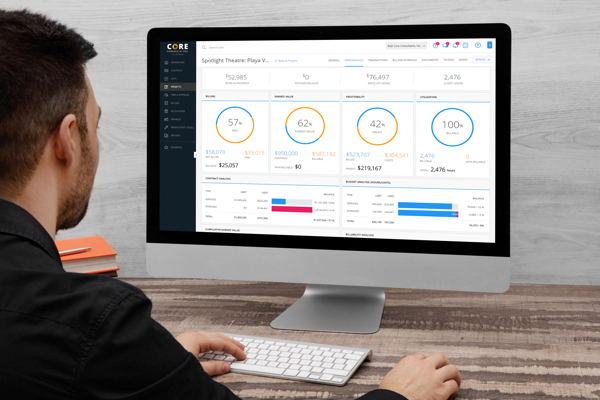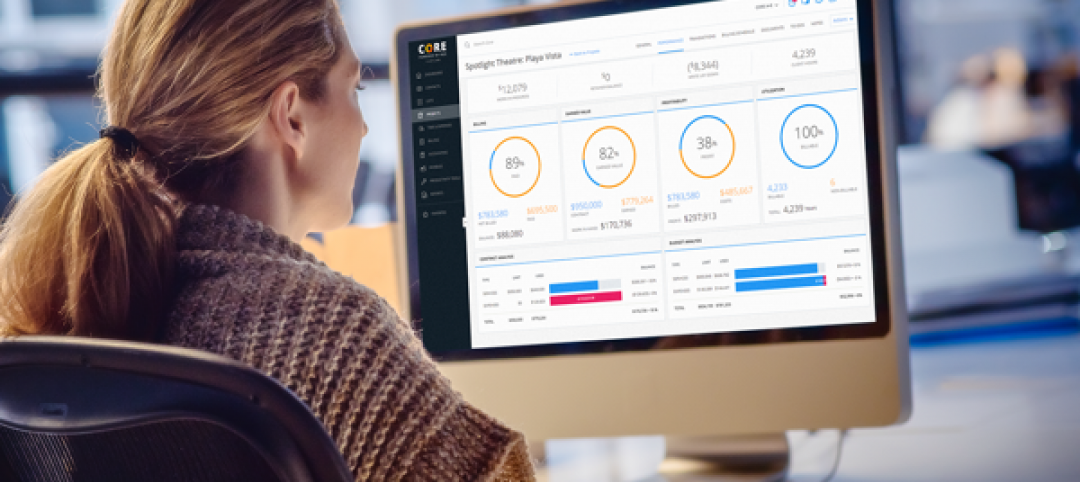Projects are the backbone of the way you do business. Isn’t it time that you step up their analysis? After all, doing so is really the only way you can set concrete goals, ensure predictability, and grow your profits in a sustainable way. Clearly, then, you can’t neglect your metrics.
The indicators I’m about to take you through comprise a potentially daunting list, but when you track them regularly, you’ll have the information you need to make the right decisions for your firm.
1. Work in Progress: This is the billable time and expenses that you’ve done but haven’t billed yet. It’s important to track as an asset on your balance sheet and as revenue on your income statement. It not only tells project managers how far along work is, but also acts as a booster if your firm needs a line of credit or loan.
2. Earned Value: This is a breakdown of how much of the project you’ve earned so far, the contract amount, and your work-in-hand. You can calculate it as the amount earned (actual work) divided by the contract amount. With this metric, you’ll have a reliable projection of the future success of your project in terms of time and budget.
3. Profitability: A very key metric! Profitability is, of course, your costs versus what’s been billed and the resulting profit. Knowing your project’s profitability while everything is still underway helps you make decisions to keep you on track. Furthermore, once everything is said and done, it’s the ultimate gauge of what you should and shouldn’t do next time.
4. Utilization: This is crucial if you’re billing hourly or hourly-not-to-exceed, but it’s very useful information even if you’re working on a fixed fee project. You’ll get a picture of your project’s efficiency in terms of billable versus non-billable hours.
5. Contract Analysis: This gives you additional insight into what’s remaining in your contract. You get a comparison between the contracted amount, what’s been spent, and what’s remaining. This way, you’ll understand ahead of time whether or not your project will exceed your contract amount.
6. Budget Analysis: Similarly, your budget analysis shows the breakdown for your services and expenses in terms of what’s been used and what your limits are. You’ll get a quick picture of whether your project is over-budget or approaching budget.
7. Billability Analysis: Your billability analysis aids you in assessing the billability and productivity of a project. It gives you a breakdown of your services and expenses in terms of billable, billed, unbilled, and non-billable. When you compare billable versus billed, you get a picture of what’s been earned and what’s in your pipeline.
8. Write-Up/Down: This is the total write-up or write-down on your billable time entries. This is helpful because you might want to bill the client more or less than the actual billable amount in order to manage your project’s budget. Knowing the overall write-up or write-down, moreover, is an illustration of a project manager’s ability to manage the scope of the project.
9. Billing Breakdown: Knowing your billing breakdown helps you assess your client. It’s simply the percentage of dollar value of your bills have been paid—or not. Of course, you’d want to look at your AR aging to know how late the client payments are, but this gives you one view of your lingering payments.
10. Client Hours: Knowing the total of logged billable time gives you a sense of whether or not you’re sticking to your time budget.
11 Retainer Balance: The remaining part of your project’s retainer—if it has one, of course—is helpful in assessing whether or not your project is on track. If you’ve used up a significant portion of the retainer and still have much to accomplish, you know you’ve got to make some changes. This information is especially useful to the principals, partners, accountants, billing users and project managers in your company.
While these metrics are vital, if you have to calculate all of them on your own, staying on top of everything can be hard. Even some of the most sophisticated project management software doesn’t make it as easy as it should be. But with a solution like BQE Core, things are much easier. Core’s project performance center delivers all of these 11 indicators—and more—in a real-time, intuitive format.

Regardless of how you get your numbers, though, these metrics—if checked throughout the life of your project—will help you ensure that things come together on time and on budget.
More from Author
Steven Burns | Jun 15, 2018
4 project management mistakes to avoid at all costs
Helpful tips for managing projects more effectively
Steven Burns | May 8, 2018
5 tips to improve employee utilization (and morale)
Ways to increase productivity and revenue, while providing a supportive workplace environment
Steven Burns | Apr 3, 2018
4 reasons to take a closer look at your project metrics
We've all heard that data is important, but what role does it really play in your business?
Steven Burns | Mar 28, 2018
6 strategies to keep your project on budget
Here are six strategies to keep your projects on or even under budget.
Steven Burns | Feb 1, 2018
If you want to improve profits, look to the numbers
Simple changes to your daily habits can help increase efficiency and profits.
Steven Burns | Jan 3, 2018
4 networking strategies to grow your business
Follow these networking strategies to grow your architectural business with the work that you want.
Steven Burns | Dec 28, 2017
Why every AEC firm needs project accounting
While standard financial accounting is essential for the health of your business, project accounting helps drive the success of individual projects.
Steven Burns | Dec 12, 2017
3 tips to address the top causes of budget overruns
The most cited issues are communication breakdowns, inadequate fees for the work provided, and unrealistic deadlines or schedules.
Steven Burns | Nov 30, 2017
4 invoicing tips that'll actually make your clients smile
There are techniques you can use with your invoices that both highlight your firm’s value and make the process more convenient for clients.
















